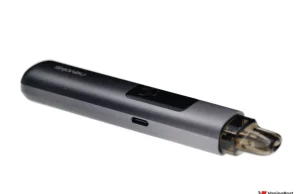The review details the potential of vapes as smoking cessation aids, the challenges associated with teen vaping, and critiques Australia’s prescription-only regulatory approach. Moreover, it debunks common misconceptions about vaping and provides evidence-based recommendations to guide policymakers towards the most favorable public health outcomes.
In the executive summary of the report, the following key areas were addressed:
Health Effects: The evidence highlights that vaping is considerably less detrimental to health than traditional smoking. Vapour contains only a fraction of the harmful substances present in tobacco smoke, and these are delivered in significantly reduced doses. It is highly probable that the long-term risks of vaping are markedly lower than those associated with smoking. Notably, there is no current evidence supporting the notion that vaping poses harm to bystanders.
Potential as a Smoking Cessation Aid: The review underscores that vaping is, at a minimum, as effective as other methods of quitting smoking. However countless studies have indicated that it is the favoured approach for smokers seeking to quit. Owing to its effectiveness and popularity, vaping has played a pivotal role in accelerating the reduction of smoking rates in countries where it is readily available.
Youth Vaping: The data suggests that the majority of vaping among young individuals with no prior smoking experience is experimental and short-lived, with regular vaping being a rarity. To this effect, the health risks associated with youth vaping are relatively minor, and the apparent connection between vaping and smoking likely results from shared vulnerabilities. At the population level, youth vaping appears to replace smoking, which can be considered as a positive public health outcome.
Nicotine and Dependence: Findings indicate that vaping is less habit-forming than smoking, and when consumed via vaping, nicotine may be considered relatively benign at the doses found in vapes.
Failures in the Current Regulatory Model: The Australian prescription-only regulatory model for vaping has inadvertently fueled a black market controlled by criminal networks, enabling unrestricted access to vaping products by youth.
In light of these findings, the review proposes several recommendations for policy adjustments, which can be summarized as follows:
- Classify low concentrations of nicotine as consumer products.
- Establish a tightly regulated consumer model where nicotine vapes are sold as adult consumer products through licensed retail outlets, with rigorous age verification protocols in place.
- Implement severe penalties and license revocations for sales to minors.
- Craft regulations that are proportional to the risks associated with vaping compared to smoking.
- Create an alternative therapeutic goods pathway for products that meet the standards set by the Therapeutic Goods Administration (TGA).
What does the public want?
In line with these recommendations, a recent market research study conducted by RedBridge among 1,500 Australian adults, revealed that an overwhelming majority, 88%, support the sale of regulated nicotine vaping products through licensed retail outlets, akin to the sale of alcohol and tobacco. Commissioned by the Australian Association of Convenience Stores, this research reinforces the findings of a Roy Morgan survey from March 2023, which indicated that 73% of Australians favour an age-restricted retail model with licensed retailers.
The survey also highlighted a widespread dissatisfaction with the current prescription-only model for vaping. Approximately two-thirds of respondents view government efforts to regulate vaping as poor or very poor, with just 2% expressing high confidence in the prescription-only approach’s effectiveness. This frustration has been exacerbated by the emergence of a thriving black market for vapes, making unregulated products fully available to both adults and minors.
Only 2% expressed high confidence in the prescription-only approach
Notably, 61% of respondents indicated that a political party’s stance on vape regulations would influence their voting decisions. Support for retail sale was consistent across various age groups and political affiliations.
Australia’s prescription-only model has largely been rejected by adult vapers, with over 90% obtaining vaping products illegally due to the stringent regulations. Only 8% of vapers have a nicotine prescription, underscoring the disconnect between government regulations and public behavior.
The strong public support for regulated retail sale of nicotine vaping products will hopefully lead to a shift in Australia’s approach to vaping regulation in the future. It is very clear that voters are in favour of vape regulations similar to the ones set on tobacco and alcohol. Disregarding this sentiment could lead to a political cost, and if nothing else, hopefully this will motivate local authorities to change strategy.
Meanwhile, Dr. Mendelsohn told Vaping Post that his colleagues and himself have not received a response on the review yet, and based on past events it is sadly safe to assume that they are not surprised. “We have received acknowledgement of receipt from several MPs, but no response to the content.”




![Recent Conference Urged Nations Worldwide to “Quit [Smoking] Like Sweden”](https://www.vapingpost.com/wp-content/uploads/2024/04/vape-conference-238x178.png)


![Recent Conference Urged Nations Worldwide to “Quit [Smoking] Like Sweden”](https://www.vapingpost.com/wp-content/uploads/2024/04/vape-conference-100x75.png)




